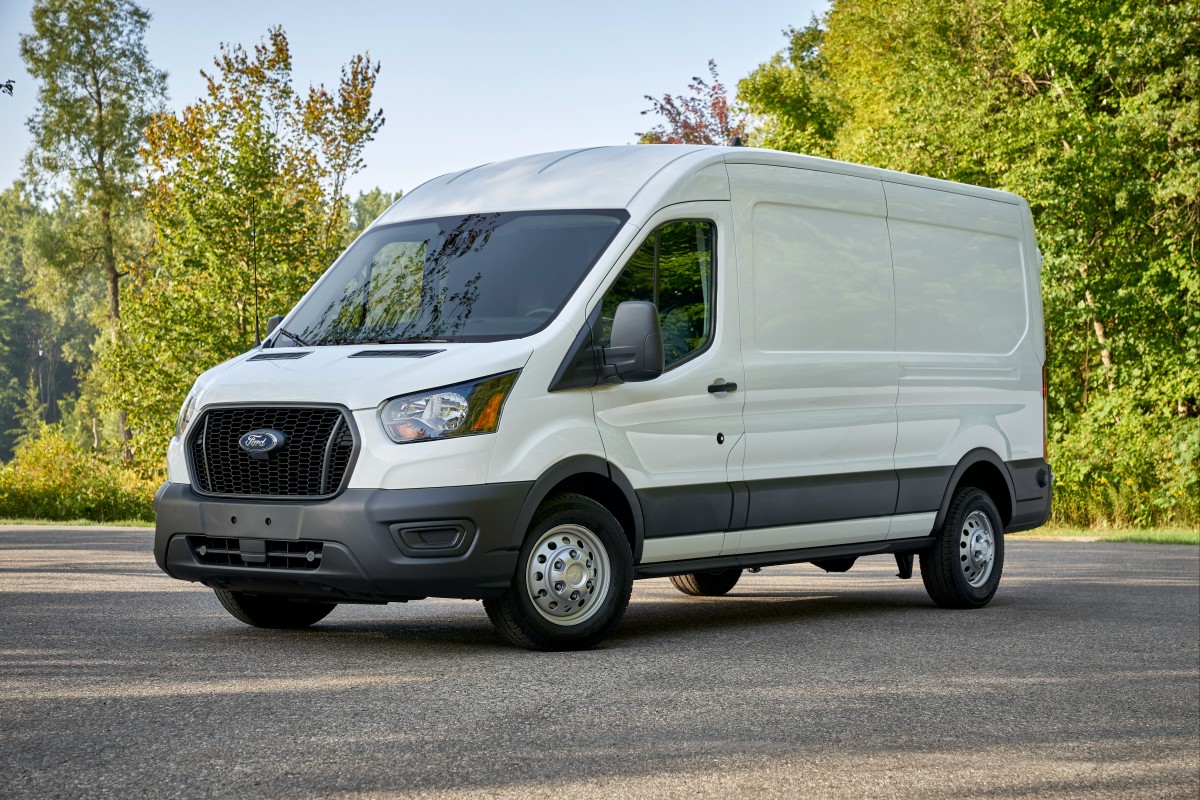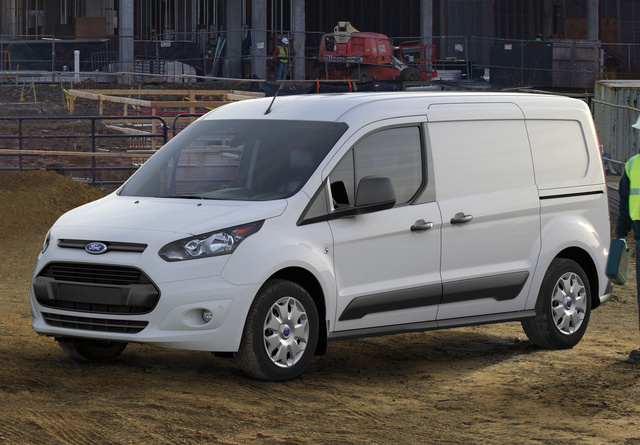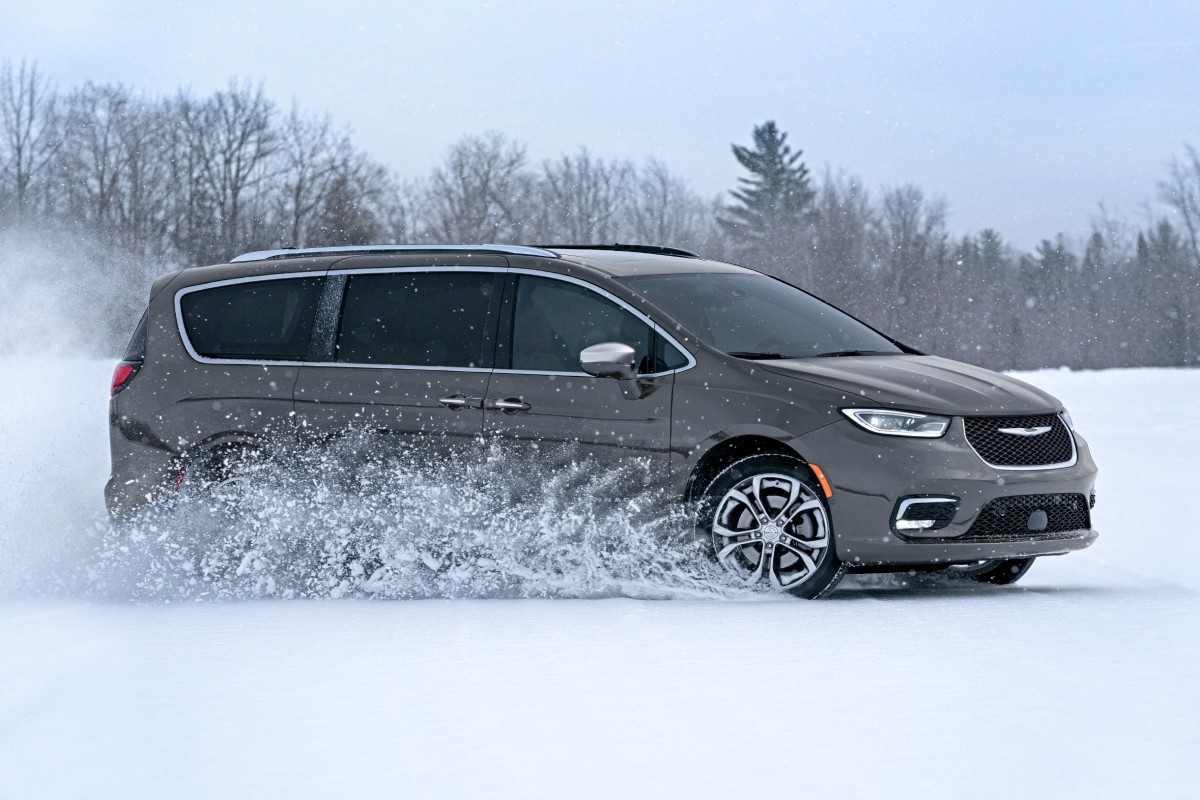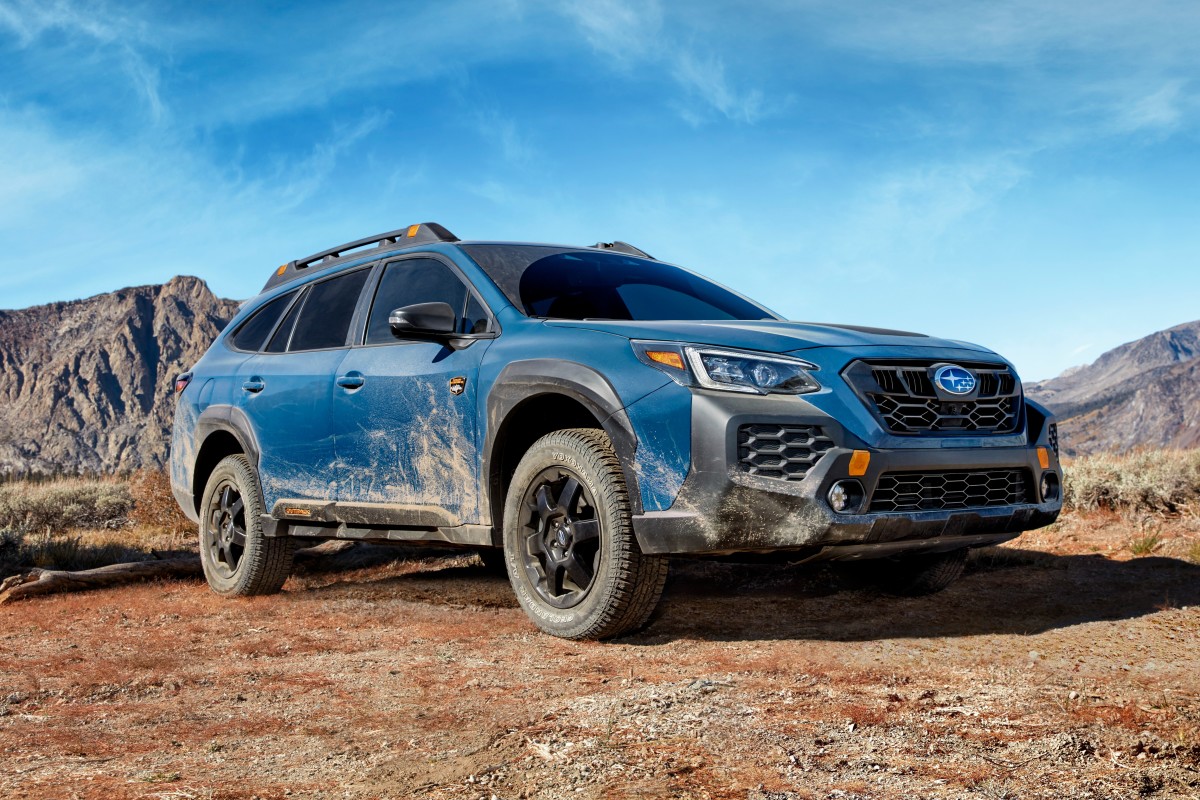Americans love motorhomes and large RVs, as they offer immense comfort and convenience. However, they’re expensive, difficult to store off-season, and depreciate faster than even the most unreliable European luxury cars. However, for those lusting after an adventurous way to take your home on the road, vans are the answer.
We’ll spare you all the buzzword hashtags, and instead say that consumers are hashtag-blessed (ah darn, sorry, that one slipped) to have access to many great used van options out there, ready to convert to a mini motorhome, tiny home, or whatever you’d like to call it. They’re often much roomier than SUVs, can be small enough to park practically, and some even offer a degree of off-road prowess. They can also offer immense functionality, possessing roof and bike racks, TVs, refrigerators, propane stoves, and living space upgrades using materials from any hardware store. Or a massive a aftermarket. Some, like Volkswagen’s older EuroVan and Vanagon, can also be found pre-built as camper vans.
For our list of the best vans for camper conversions, we’ve identified a spectrum of new and used van options. On the smaller end are crossover-like vans and minivans such as the Ford Transit Connect and Dodge Caravan. On the large end, traditional American vans like the Chevrolet Express vie with European-style vans like the Mercedes-Benz Sprinter. In the middle fall the Volkswagens. The best camper van for you is down to your use case and budget.
The Best Vans for Camper Conversions in 2025
- Chevrolet Express/GMC Savana
- Chrysler Pacifica Hybrid
- Dodge Grand Caravan
- Ford E-Series
- Ford Transit
- Ford Transit Connect
- Mercedes-Benz Sprinter
- Ram ProMaster
- Ram ProMaster City
- Volkswagen EuroVan
Chevrolet Express/GMC Savana
Priced from: $8,000
Essentially identical except for the badges, the Chevy Express and GMC Savana are the oldest vehicles on the market in 2025 and the last traditional American vans, having first debuted in 1997. Still, these vans are a durable and spacious choice, and their longevity means there are thousands of them to choose from on the market at any one time, and a service life of 250,000 low-maintenance miles isn’t unrealistic. Even when things do break, everything bolted up under it is only as far away as the nearest AutoZone.
Underneath the Express and Savana lurk a stout full-size truck frame and proven mechanical pieces. Because these vans were built for such a long period of time, there are many different engine choices, but most use the tough and proven gas-powered 4.3-liter Vortec or EcoTec V6 engines or the 5.3-liter V8. There are also diesel options (from a recent 2.8-liter four-cylinder up to a giant 8.1-liter V8), which help the predictably poor fuel mileage, but they’re harder to find. Handling is also not this van’s strong suit. It looks, feels, and drives like a truck.
They’re not as cool as some other options, but the Chevy Express and GMC Savana offer a lot that makes up for that. The huge cargo area is comparable to Ford’s E-Series (perfect for camping gear storage), 2003 to 2014 models could be had with all-wheel drive (AWD), and despite their age, both Chevrolet and GMC have added more features over time like Bluetooth capability. There are also passenger versions of these vans, some of which have been turned into road campers by conversion companies like Mark III. Those offer a head start on building your own DIY (do-it-yourself) camper van.
Chrysler Pacifica Hybrid
Priced from: $25,000
Introduced in 2017, the Chrysler Pacifica Plug-In Hybrid is the only potential camper conversion on this list that offers a hybrid drivetrain. What’s more, you can get 32 miles of electric range using just the battery. That makes the Pacifica Hybrid particularly compelling for those who want an EV but don’t want range anxiety and those who need a camper that can double as an economical daily driver.
We’ve seen some cool DIY campervan conversions with beds, storage space, cabinets, and even compact refrigerators and microwaves installed. The Pacifica Plug-In Hybrid is equipped with a 115-volt, 150-watt outlet on the right side of the vehicle, before the third row of seats. It can provide power for things like cell phones and other low-power devices. Most microwaves and refrigerators exceed 150 watts, so if you’re going that route, you’ll need to use some other source of power for your van build.
If you’re staying at an RV park, you can plug an aftermarket Level 2 portable charger into a 50-amp RV outlet and charge significantly faster than you could by using the Level 1 charger that the Pacifica comes with. That essentially offers you the ability to road trip to your camping location, charge overnight, and make all of your local trips on electricity, thereby drastically improving your gas mileage.
Dodge Grand Caravan
Priced from: $7,000
If you’re totally unconcerned with cool factor, the Dodge Grand Caravan (and its many siblings) may be the best, most affordable starting point for van lifers in the USA. Dodge Caravans are for sale everywhere, in every price range, under as many as four different brand names, including the fancier Chrysler Town & Country, the plain Plymouth Voyager, the cargo-only Ram C/V, and the Volkswagen Routan. There are five generations of Caravan dating back to 1984’s original, but most of the ones you’ll find for sale today are the 1996-2020 varieties.
Probably the best choice is the fifth and final generation, only discontinued in 2020. Fifth-gen Caravans are a top choice for many reasons: They’re mechanically bulletproof, roomy, and possessed of all the comfort, convenience and safety of a modern vehicle. This generation was also offered as the plusher Town & Country (replaced by the Pacifica in 2017) and the Routan, but the Volkswagen lacks the novel Stow’n Go seats that fold into the floor or the optional swiveling seats. The bare-bones Ram C/V comes without interior fittings.
Prior to 2011, there were more engine options, but that year all of these vans were standardized on the 3.6-liter Pentastar V6 and a six-speed automatic transmission. They’re not hot rods, but the Caravan and its siblings drive more like midsize sedans than trucks, and they can return about 20 mpg combined. By 2010, a third of Grand Caravan sales went to rental fleets, which depressed resale value, meaning that you can buy a late-model Grand Caravan or Town & Country pretty cheaply.
Ford Econoline
Priced from: $9,000
When most Americans think “van,” the E-Series is what comes to mind. Known as the Econoline until 1999, the E-Series dates all the way back to 1961 and its final generation, built from 1992 to 2014, was a heavy upgrade of its 1975-1991 predecessor. Ford still makes a cutaway cab-and-chassis E-Series for commercial users. Any of this body-on-frame van’s generations make a good basis for a camper, and many small camper E-Series versions have been built by companies like Glaval and Mark III, but the post-1992 models are the easiest to find and live with.
The first Econoline—built from 1961 to 1967 and only with straight-six power—might be appealing to the kind of classic vehicle enthusiasts who like VW T1s and T2s, as it’s a forward-control van with classic styling, but they can also be almost as pricey as classic VWs. The second generation (1968-1974) was short-lived but a popular surfer machine and custom getaway van in the 1970s. It offered optional V8 power and most that survive are already campers, as are many of the earlier third-gen models.
The third and fourth-gen models share a chassis and many mechanical parts. They had engines ranging from a 4.2-liter V6 to a 7.5-liter V8, but diesel V8s were also offered. Most will have Ford’s 4.6 or 5.4-liter Triton V8s, both powerful and durable. There are four-wheel drive (4WD) conversions from Quigley to take you off-grid with genuine off-road capability, but they’re rare and pricey. In terms of space, handling and fuel economy, the E-Series is comparable to the Chevy Express and GMC Savana.
Ford Transit
Priced from: $25,000
Originally a European offering dating back to 1965, the Ford Transit van made its way to the U.S. in 2014, replacing the E-Series. Any nostalgia tradespeople felt for the Ford Econoline and E-Series was vaporized by the fact that the Transit offered more cargo volume and payload, better driving dynamics, and superior fuel economy at a similar price. Ford had seen the writing on the wall with van buyers defecting to another Euro-van, the Mercedes-Benz Sprinter, and decided to follow suit. These vans cost more used than traditional American vans, but they offer much more capability.
The Transit is still on sale today, and there’s even an electric version. The basic vehicle comes in two wheelbases, 129.9 and 147.6 inches, three different lengths stretching to nearly 22 feet, and three different roof heights. The tallest Transits measure 110.1 inches vertically, offering tons of headroom inside even for six-footers, so this really can be an RV-sized camper and a true home on wheels.
For all that size, the Transit still gets better gas mileage and handles better than any E-Series. Power comes from 3.5 or 3.7-liter V6s, including a 310-horsepower EcoBoost version, or a torquey, fuel-efficient turbodiesel inline five-cylinder. A six-speed automatic was used until 2019, with a ten-speed unit replacing it thereafter.
Transit conversions are available brand new through companies like Explorer and Sportsmobile, but you’ll find thousands of examples of these vans converted by DIY’ers on Instagram.
Ford Transit Connect
Priced from: $15,000
Like its larger sibling, the Transit Connect is also European in origin. Meant for the tight streets of Rome, it debuted in 2002 and came to the U.S. in late 2009. There are two generations, as the Transit Connect got a total redesign for the 2014 model year, but both are small. The original Connect’s footprint was no larger than that of a Ford Focus, and the second-generation model only slightly bigger. Effectively, they’re van crossovers, offering car-like dynamics and economy on a car platform (shared with the Focus) but with an available high-roof van body.
Though the first-generation Transit Connect is the smallest vehicle on this list externally, there’s lots of space inside, with a cargo area 81 inches long and 53.7 inches tall, with 129 cubic-feet of volume, only 15 cubic-feet shy of a Dodge Caravan with all of its seats stowed. The second-gen model comes in two wheelbases, 104.8 or 120.6 inches, with the longer version having an 87.3-inch long cargo area and 149 cubic-feet of volume. Second-generation Transit Connects also have more features and are easier to find in passenger configuration.
While diesels were available elsewhere, the U.S. Transit Connect has only come with gas engines, at first a 2.0-liter four (22 mpg combined) in the first-generation model and then later 2.0, 2.5, and 1.6-liter turbocharged fours in the second-gen version, returning up to 26 mpg. These space-and-fuel-efficient machines make for intimate campers, but they also allow drivers a vehicle that can be used as a comfy camping platform or an efficient, easy-to-park daily driver.
Mercedes-Benz Sprinter
Priced from: $25,000
Although best known globally as a Mercedes-Benz, in the United States, Sprinter vans have been marketed by Mercedes-Benz, Dodge, and Freightliner, so be sure to include those other brands in your search. The first of the modern European-style vans to arrive in America, the Sprinter replaced the ancient Dodge Ram Van in 2003 and telegraphed the direction which most van manufacturers except GM would follow: unibody construction; smaller yet still powerful, fuel-efficient gas and diesel engines, many body configurations, and gargantuan interior volume. It’s no wonder than van builders love ‘em.
The last part is what really made the Mercedes Sprinter van’s name here in the United States. When tradespeople realized the massive volume that a Sprinter cargo van was capable of carrying, the writing was on the wall for the body-on-frame vans that had been soldiering on since the 1960s.
With two wheelbases, multiple roof heights, and three lengths available, a Sprinter could meet the needs of anyone from a flower delivery shop all the way to a full plumbing and heating business. Later second-gen Sprinters (2006 to 2018) were available here with both a diesel engine and four-wheel drive, making them wildly attractive to vanlife camper converters. Today, a scan of the hashtag on Instagram reveals thousands of Sprinter conversions hauling all over the country with solar panels, gas stoves, and screen rooms attached. The Sprinter isn’t cheap, but it’s probably the best camper conversion platform around.
Ram ProMaster
Priced from: $15,000
What brought the Mercedes-Benz Sprinter to the U.S. was DaimlerChrysler’s need to replace the old Dodge Ram Van. But after Daimler and Chrysler broke up, Dodge dealers had to stop selling Sprinters. In 2014, by which time Ram had been spun off into its own division, they got a replacement courtesy of new parent company Fiat Chrysler Automobiles (now Stellantis), the Ram ProMaster. Based on the European Fiat Ducato, the ProMaster looks very much like the Sprinter and the Ford Transit on the surface but is simpler in design and configuration.
Like the other two big Euro vans, the ProMaster comes in many different lengths (up to 250.9 inches long) and heights, but only the low (89-inch) and medium-sized (99-inch) roofs are offered in North America whereas Ford and Mercedes get even higher tall roofs. Similarly, while the Sprinter and the Transit offer many engine options and even driveline configurations, the ProMaster now comes only with front-wheel drive (FWD) and the 3.6-liter Pentastar V6, the same engine as in the Dodge Caravan. A 3.0-liter turbodiesel was offered until 2016, but rarely chosen, even though a diesel powertrain makes for the perfect van when easily ticking off mileage is a key attraction.
Mechanically, the ProMaster is less complex than the other two and its very square shape makes building an interior space a little easier than the other two, though aftermarket fittings for ProMasters are more limited than those others. The downsides? The ProMaster has limited ground clearance, an engine that's a little overmatched by the van's weight and no option for all-wheel drive (AWD) capability. It is, however, the least expensive way to get into one of these big modern vans, either used or as a new van.
Ram ProMaster City
Priced from: $15,000
Aimed at the Ford Transit Connect and Nissan NV, the Ram ProMaster City is a similar small van, built in Turkey and sold in Europe as the Fiat Doblò. Though almost identical in concept to the Transit Connect, the ProMaster City is a little smaller outside but slightly larger within, and more oriented towards being a commercial cargo van. It comes with only one available powertrain, using the 2.4-liter “Tigershark” engine formerly shared with the Jeep Compass and Cherokee mated to nine-speed automatic transmission driving the front wheels.
While the ProMaster City looks like a work van even if you opt for the passenger version (the rear windows are always blanked out wiht metal panels) and has a plain and plasticky interior, it does make a pretty decent micro-camper that can be built out on a budget. The cargo area is 87.3 inches long and 51.3 inches tall, 2.5 more than in the Transit Connect, with a bit more cargo space as a result. The roof comes with six pre-installed anchors and a 150-pound in-motion rating, and it has a 1,820-pound payload maximum, to the Ford’s 1,550.
Because it can hold more payload, it’s a little easier to build furnishings into a ProMaster City than a Transit Connect. There’s a little more aftermarket support too, with a variety of pre-made camper van conversion kits available for DIY-ers to turn their City into a camper in a weekend. and it still gets decent gas mileage, up to 24 mpg combined. As a vehicle, the ProMaster City isn’t all that exciting, but it’s easy to use it both as a camper and as a full-time commuter. 2022 was the ProMaster City’s final model year.
Volkswagen EuroVan
Priced from: $8,000
Successor to the Vanagon and precursor to the electric ID.Buzz, the Volkswagen EuroVan offers a more modern take on the classic VW van recipe at what are still affordable prices. Right now, you can find clean examples with price tag around $7,500 with reasonable mileage, but it won’t be that way forever. Nice EuroVans are already getting more expensive like Vanagons did before them, and since many were built with camping in mind from the factory (there are both full-on RVs, pop-top Westfalia campers and more subtle MultiVan models), they’re a great fit for VanLifers.
When Volkswagen introduced the EuroVan in the U.S. in 1993, it was both bigger and taller than any competing minivan, but smaller than traditional American vans like the E-Series. It’s big shape and sluggish 109-horsepower 2.5-liter engine meant it appealed only to Volkswagen diehards, and sales were so disappointing that passenger EuroVan imports ceased until 1999. From 1994 to 1998, however, EuroVan campers were sold by Winnebago, and were reasonably popular. In 1999, the passenger EuroVan returned with major upgrades, including a 140-horsepower 2.8-liter V6, further upgraded to 201 hp in 2002.
Since so many EuroVans already have camper features, they’re an easy choice for a conversion. They’re also durable and roomy, though not as fuel-efficient as other small vans. It’s not a light machine, so even with the most powerful V6 you can only expect 16 mpg combined, max. Now that Eurovans are outside the EPA’s 25-year rule for importation from Europe, we’re starting to see some diesel-powered versions (or T4 Transporters, as they were called at home), coming stateside. Expect to pay a premium for those, and for Westfalia and Winnebago models.












